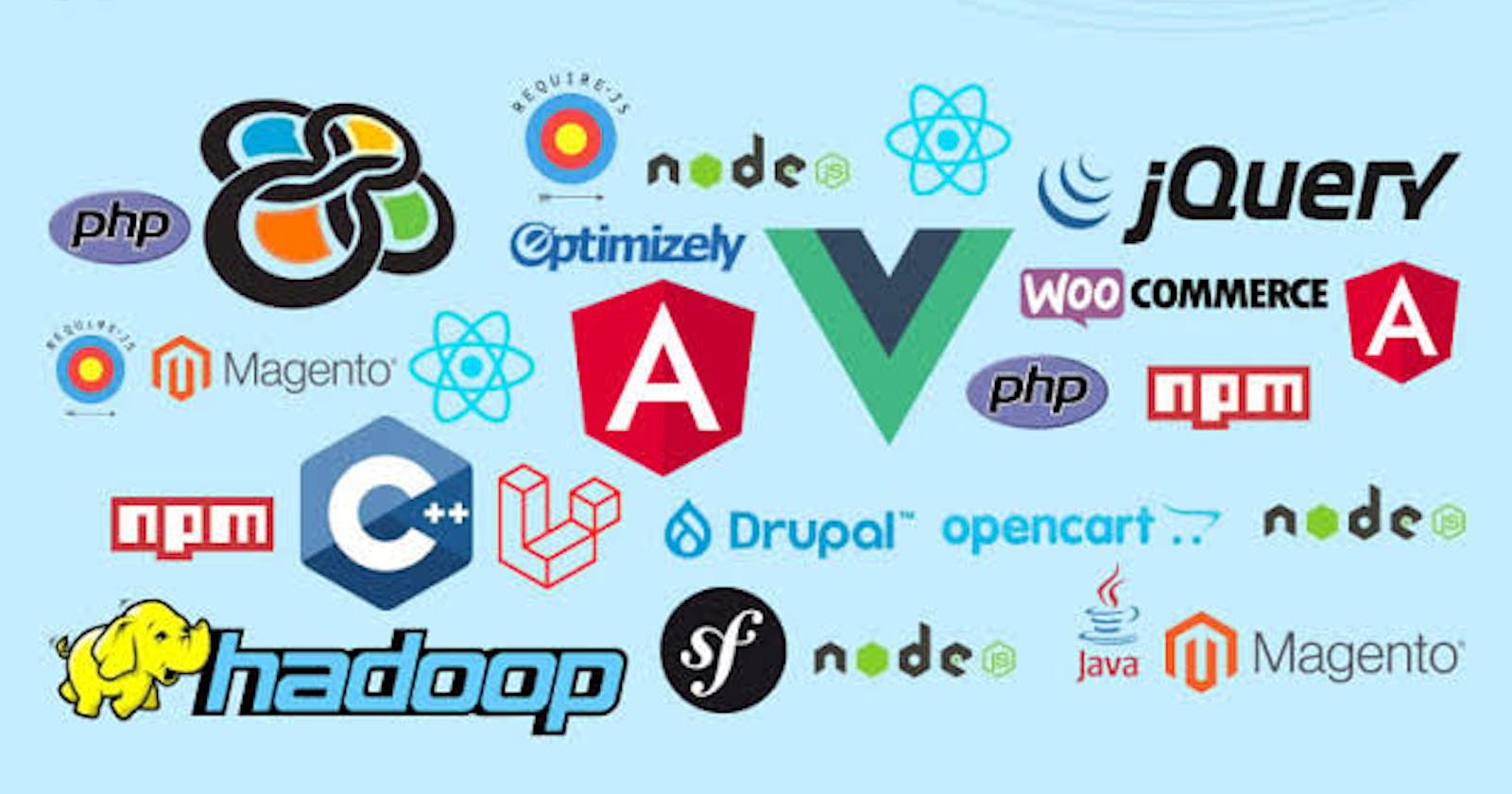Introduction To Frontend Frameworks
Knowing about frameworks in frontend development
Table of contents
No headings in the article.
Frontend Frameworks
As a developer, you must have heard the word "framework" and kept wondering what it means to you as a developer.
In this article, I would explain a depth definition of frameworks mainly for frontend Developers.
Frameworks are a set of programming tools or libraries that assist developers to create a web interface efficiently and more effectively.
They can be used to design and develop a consistent and responsive user interface across different web browsers and devices.
These frameworks typically include components such as CSS (Cascading Style Sheet) libraries and JavaScript libraries.
Frontend frameworks are beneficial to developers as it allows them to focus on building functionality rather than worrying about the underlying technical details of the user interface. It saves time and reduces the risk of errors, which results in faster development and higher-quality applications
Here are some popular CSS libraries and their key features:
Bootstrap: Bootstrap is one of the most popular CSS libraries, and it's known for its extensive collection of pre-built UI components and responsive grid system. It includes styles for typography, forms, buttons, tables, and more, and it also includes JavaScript plugins for common UI interactions, such as modals, tooltips, and carousels.
Foundation: Foundation is another popular CSS library that focuses on responsive design and customization. It includes a responsive grid system, styles for typography, forms, buttons, and more, and it also includes JavaScript plugins for UI interactions.
Bulma: Bulma is a modern CSS framework that emphasizes simplicity and flexibility. It includes a responsive grid system, styles for typography, forms, buttons, and more, and it also includes a powerful set of CSS modifiers that allow developers to customize the look and feel of the UI without writing any custom CSS.
Materialize: Materialize is a CSS library that is based on Google's Material Design language. It includes styles for typography, forms, buttons, cards, and more, and it also includes JavaScript plugins for common UI interactions, such as modals and dropdowns.
Semantic UI: Semantic UI is a CSS library that focuses on creating a more intuitive and natural user interface. It includes styles for typography, forms, buttons, menus, and more, and it also includes a unique set of CSS classes that describe the meaning and purpose of UI elements.
Tailwind CSS: Tailwind CSS is a utility-first CSS library that allows developers to quickly and easily create custom UI styles by combining pre-built utility classes. It includes styles for typography, forms, buttons, and more, and it also includes a comprehensive set of utility classes for common layout and styling tasks.
These CSS libraries are just a few examples of the many options available to developers. Each library has its own set of features and strengths, so developers need to choose the one that best fits their needs and the needs of their web application.
Here are some popular JavaScript libraries and their key features:
jQuery: jQuery is one of the most popular JavaScript libraries, and it's known for its simplicity and ease of use. It includes functions for DOM manipulation, event handling, animation, and AJAX requests, and it also includes a wide range of plugins for common UI interactions, such as sliders, carousels, and form validation.
React: React is a JavaScript library developed by Facebook, and it's known for its efficiency and reusability. It allows developers to create complex UI components using a declarative syntax and a virtual DOM, and it also includes a powerful set of tools for managing state, handling events, and integrating with other libraries and frameworks.
Angular: Angular is a JavaScript framework developed by Google, and it's known for its scalability and flexibility. It allows developers to create dynamic web applications using a combination of HTML, CSS, and JavaScript, and it also includes a powerful set of tools for data binding, dependency injection, and routing.
Vue.js: Vue.js is a lightweight and easy-to-learn JavaScript library that allows developers to create reactive UI components using a simple and intuitive syntax. It includes features such as data binding, computed properties, and event handling, and it also integrates well with other libraries and frameworks.
D3.js: D3.js is a JavaScript library that focuses on data visualization and manipulation. It allows developers to create interactive and dynamic charts, graphs, and maps using a combination of HTML, CSS, and SVG, and it also includes a wide range of tools for data manipulation and analysis.
Lodash: Lodash is a JavaScript utility library that provides a set of functions for common tasks, such as data manipulation, array and object manipulation, and functional programming. It includes over 300 functions that can be used to streamline development and reduce the amount of custom code needed for common tasks.
CONCLUSION
Frontend frameworks have become an essential tool for web developers to build modern, responsive, and scalable web applications. They offer a range of features and functionalities that help developers streamline their workflows and deliver better user experiences.
Using a frontend framework can significantly reduce development time and effort while providing robust and reliable solutions. It also provides developers with access to a vast community of experts, resources, and documentation that can help them stay updated and enhance their skills.
However, it is essential to choose the right framework for your project, considering factors such as project requirements, team expertise, and long-term maintenance needs. Additionally, it is crucial to ensure that the framework is regularly updated and supported to avoid potential security risks or compatibility issues.
Overall, frontend frameworks can empower developers to build innovative and user-friendly web applications efficiently. As the web continues to evolve, the use of frontend frameworks will undoubtedly remain a vital aspect of modern web development.

